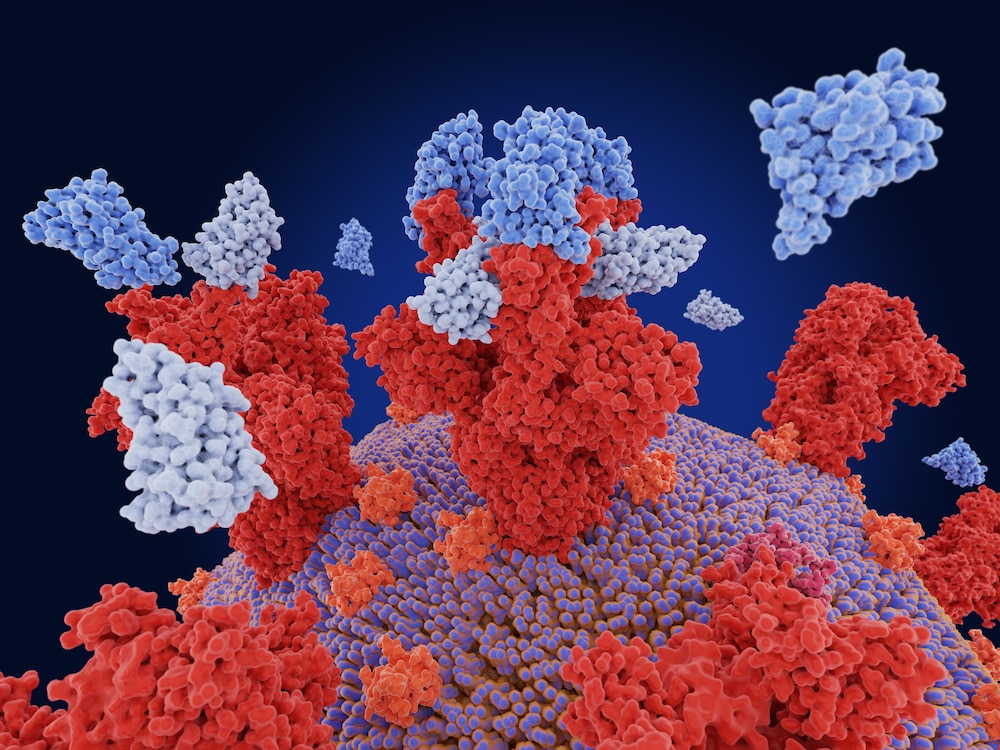Create a free profile to get unlimited access to exclusive videos, sweepstakes, and more!
Brain punching nanobodies could treat Parkinson’s and dementia
Violence usually isn't the answer, in this case we'll make an exception.

From Day of the Dead to Shaun of the Dead, the secret to killing zombies remains the same: remove the head or destroy the brain. By many accounts, zombies spread through disease transmission, and stopping the spread from one individual to the next can only be achieved through causing enough head trauma that the pathogen is stopped in its tracks.
Neurocognitive diseases like Parkinson’s and dementia are far more monstrous, but new research indicates they might be stopped in a similar if less gory fashion: by punching into individual brain cells or neurons to combat the symptom-causing proteins. The evidence suggests that various neurocognitive diseases are caused by misfolding proteins called alpha-synuclein, which clump together inside cells and disrupt their inner workings. However, getting into the cells to address those proteins has remained a particular challenge for medical science.
Xiaobo Mao from the Institute for Cell Engineering at Johns Hopkins University and Wenjing Wang from the Life Sciences Institute at the University of Michigan are two of the authors of a new paper published in the journal Nature Communications. Their work uses a smaller and more agile version of antibodies, known as nanobodies, capable of slipping inside the cells to meet alpha-synuclein proteins head on.
“Nanobodies are very similar to antibodies but they’re only about one tenth of the size of a conventional antibody and their folding is more stable both intracellularly and extracellularly. They’re also easier to synthesize,” Wang told SYFY WIRE.
Traditionally, nanobodies have been derived from the bodies of non-human animals, most commonly llamas, where they naturally occur. Researchers would immunize a llama and wait for the animal to produce nanobodies, at which point they would be removed and used for research. In this new work, however, the team was able to synthesize nanobodies in the lab without using any animals, by randomizing amino acid sequences to generate a nanobody library. As a result, they were able to construct seven different nanobodies. One of these synthesized nanobodies, called PFFNB2, was especially good at grabbing hold of alpha-synuclein clumps inside brain cells while avoiding alpha-synuclein in its monomer form. That’s important because the proteins may have important functions in the brain when in the monomer form. It’s only when they start to clump together that things go awry.
It had been previously hypothesized that antibodies might be effective at destabilizing protein clumps in the brain, but they’ve been limited in function due to their size. Conventional antibodies struggle to get inside the brain cells and even when they do, they’re unstable. Nanobodies, however, are small enough to punch their way through and remain stable once inside the brain.
“People tried antibodies, but they can only stay outside the neuron or the cell. That means they can prevent subsequent aggregation but if there are already alpha-synuclein proteins inside, you don’t have a way to get rid of them. These nanobodies can go directly intracellular to function,” Mao said.
Using nanobodies to treat neurocognitive diseases is promising especially because recent research has revealed that many neurocognitive diseases actually start in the gut or the nose before making their way to the brain. At that stage, the disease is usually asymptomatic. By the time you realize you have symptoms, you’re already in the middle stage. Once in the brain, misfolded proteins migrate to various brain regions and eventually to the regions which are responsible for cognition.
“If you have Parkinson’s, it’s already in the middle stage by the time you have symptoms. Finally, it goes to the hippocampus or the cortex, the regions related to cognition. The central concept would be to stop it from spreading to the cortex. If we can slow down or block transmission, then we have a chance to prevent the pathology from getting to the cognition related regions,” Mao said.
Moreover, these nanobodies might be effective at reversing damage which has already occurred. Experiments using mouse brain cells showed that the synthesized nanobodies were able to successfully bind to alpha-synuclein protein clumps and destabilize them. That means not only might they stop the spread, but they could also get into the cells and unwind the tangling already present.
There’s still a long road between where we are today and a clinical application. The next step would be testing the nanobodies in-vivo, meaning inside the body of a live mouse. Next, researchers plan to test the process on animals more closely related to humans, probably primates. Finally, if all goes well, they’ll move into a clinical study with humans.
Sometimes bigger isn’t better, and it helps if you can wind your amino acid fists up as tightly as possible and aim for the head.


























